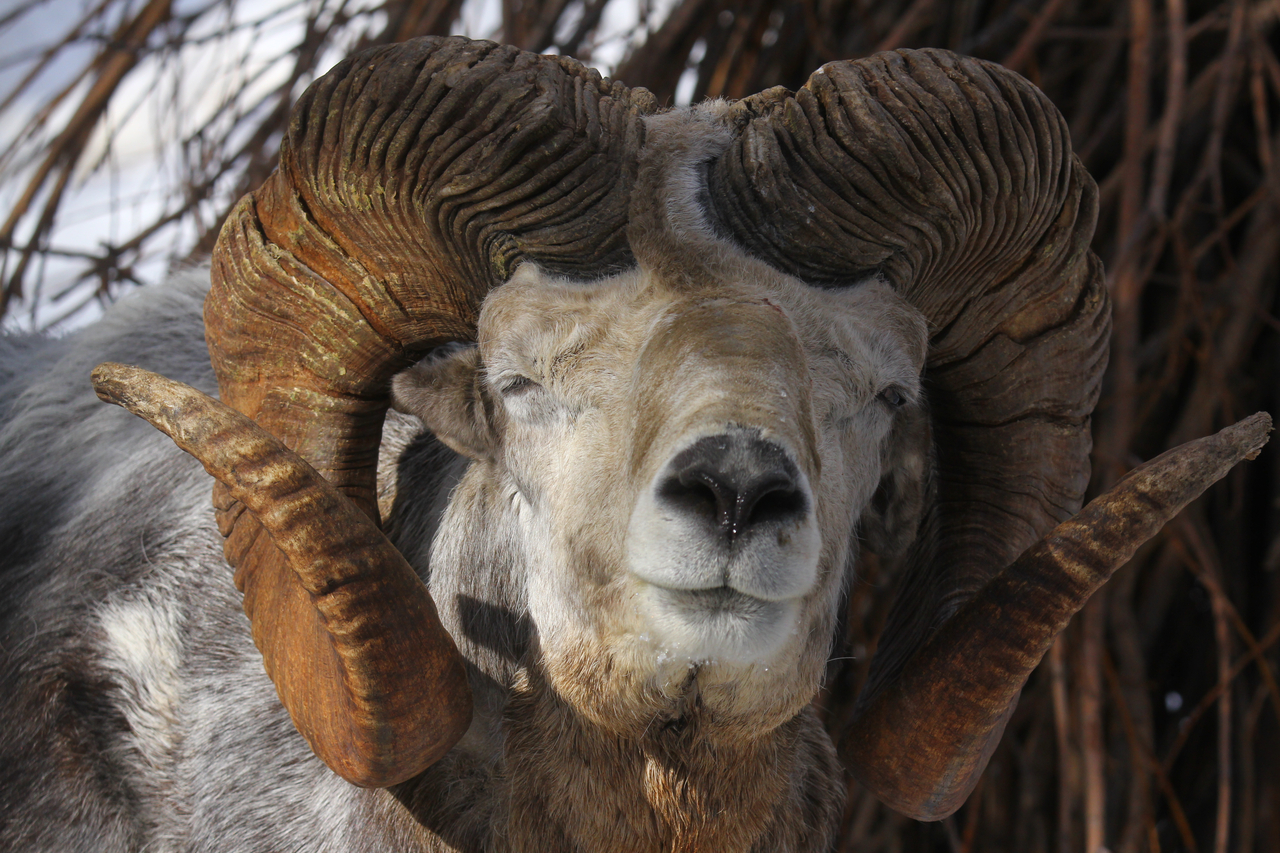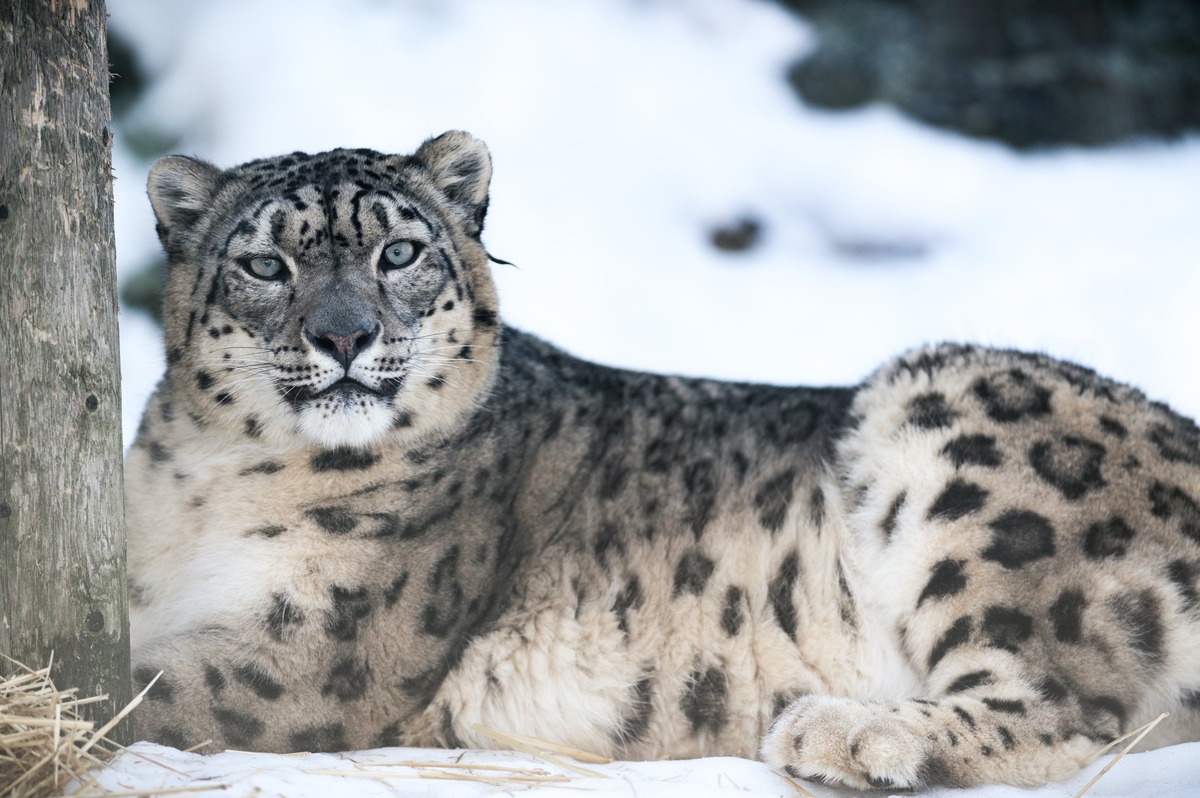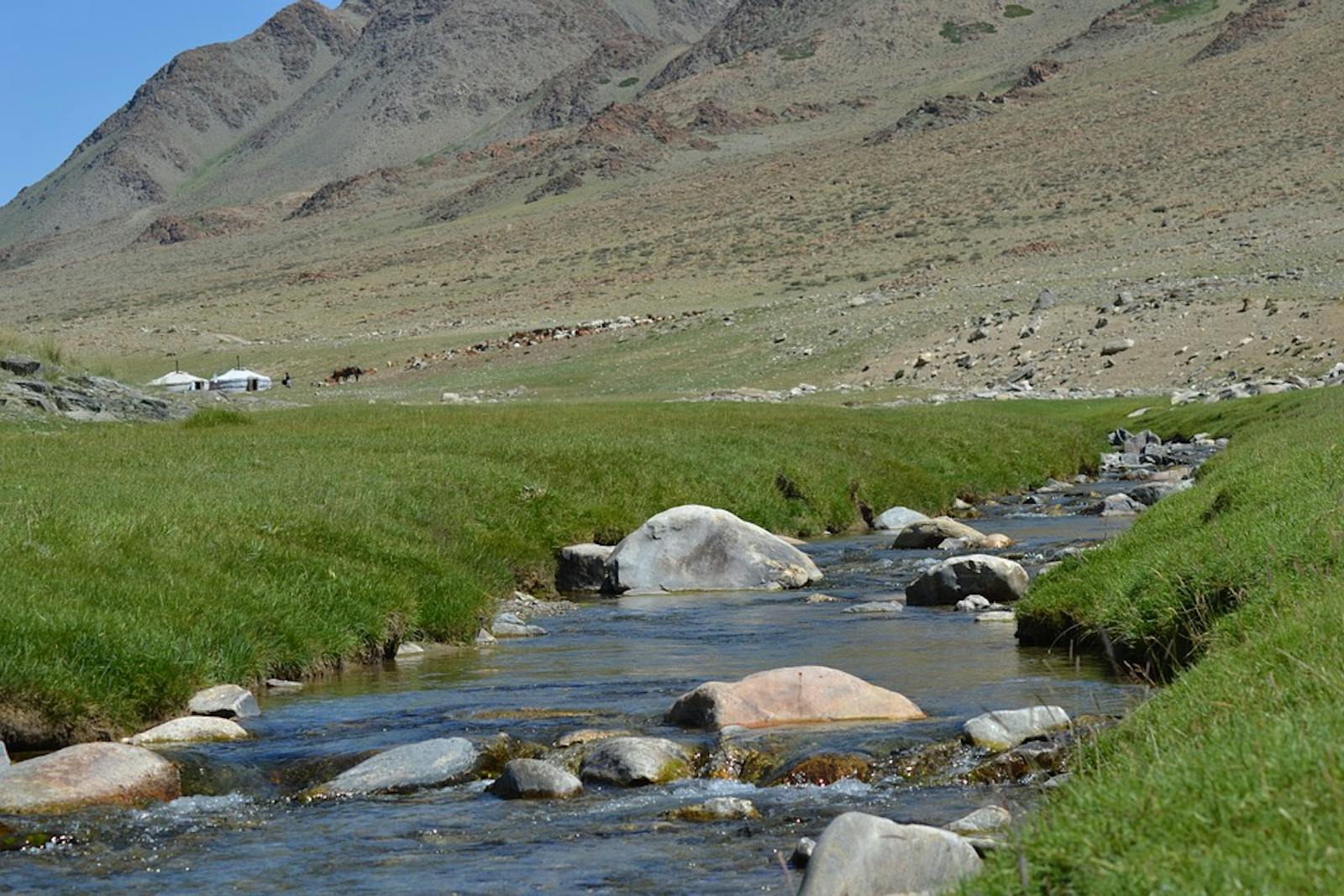Altai Alpine Meadow and Tundra
The ecoregion’s land area is provided in units of 1,000 hectares. The conservation target is the Global Safety Net (GSN1) area for the given ecoregion. The protection level indicates the percentage of the GSN goal that is currently protected on a scale of 0-10. N/A means data is not available at this time.
Bioregion: Altai Mountains & Ermin Valley (PA37)
Realm: Central Eurasia
Ecoregion Size (1000 ha):
9,036
Ecoregion ID:
749
Conservation Target:
75%
Protection Level:
3
States: Russia, Mongolia, Kazakhstan, China
The Altai mountain system separates the desert-steppe basins of Central Asia from Siberia. High latitude and ample precipitation confer upon the Altai range an arctic character distinct from other Central Asian ranges to the south. According to UNESCO, which nominated the Great Altay Transboundary Biosphere Reserve in 2017, “the region represents the most complete sequence of altitudinal vegetation zones in central Siberia.”

The flagship species of the Altai Alpine Meadow and Tundra ecoregion is the Altai argali. Image credit: Cloudtail the Snow Leopard, Flickr
The Altai Alpine Meadow and Tundra ecoregion lies above conifer forest treeline, occupying the headwaters of two of Siberia’s greatest rivers, the Ob and the Irtysh. This ecoregion supports apex predators such as snow leopards, lynx, gray wolf, wolverine, and their diverse prey species. Lynx and brown bears are also recorded.
In the Altai, alpine vegetation appears above 2,000 m elevation and dominates the landscape above 2,400 m. Alpine meadows include grasses familiar across montane Central Asia—Stipa feather grass and perennial clumps of Festuca—together with herbaceous wildflowers that bloom brightly in the summer. Thickets of dwarf rhododendrons occur in some areas.
High alpine tundra landscapes—sparse vegetation interspersed with rock and scree—occur above 3,000 m. Here, cushion plants grow in permafrost-free areas above 3,500 m, while poorly drained depressions support thickets of dwarf birch and willow. Lichens and mosses are the principle ground cover across great expanses of high country. Summers are temperate but very short; winters are frigid with temperatures as low as -62°C. Precipitation in this ecoregion ranges from 250–650 mm per year, increasing westward.
Great Altay Transboundary Biosphere Reserve (15,438 km2, core area 2,698 km2) includes Katunskiy Biosphere Reserve, Russia, and Katon-Karagay Biosphere Reserve, Kazakhstan. This unit overlaps with a UNESCO World Heritage property located entirely within the Russian Federation, named Golden Mountains of Altai.
Markakol Nature Reserve (1,030 km2), Kazakhstan, supports a similar range of habitats on slopes that lie above a large, freshwater lake. Hanas National Nature Reserve (2,500 km2), China surrounds a large glacial finger lake on the southern slope of the Altai range with alpine meadow habitat above 2,000 m.

Snow leopard. Image credit: Eric Kilby, Creative Commons
Alpine meadows of Katunskiy and Katon-Karagay Biosphere Reserves are rich in forbs, including fawn lily, gentian, primrose, and columbine. Plants of the highest elevations are highly specialized and limited to favorable microclimates, their leaves appressed to the ground. Examples include Siberian saxifrage, medicinal rhodiola, and small plants in the mustard family.
Woody plants such as barberry and gooseberry find shelter in high elevation boulder fields. Exposed, well-drained scree fields support resilient shrubs that stay close to the ground: juniper, willow, and honeysuckle.
Other than apex predators, the alpine habitats support fewer species of hoofed mammals than the conifer forests below, but one large ungulate at home in the high country is the Altai argali, a wild sheep listed vulnerable by IUCN. Other mammals of conservation significance include Siberian musk deer and several members of the weasel family, including the wolverine, largest weasel of all. Siberian zokor, a subterranean rodent genetically akin to the eusocial mole rats, burrows beneath the alpine turf.
North slopes of the Altai have circumpolar mammals such as reindeer, Altai pika, and high latitude rodents like Arctic ground squirrel. Endangered Saker falcon breed in the alpine zone, but their population in Kazakhstan has been declining due to illegal capture for falconry.
Most of this ecoregion is relatively undisturbed by human activity, with the exception of gold placer mining in some areas. The ecoregion contains other valuable metal deposits as well. Since the Altai landscape is exceptionally scenic, improved access could generate mountain tourism with all of its associated costs and benefits.
Priority conservation actions for the next decade
- Conserve the Saker falcon populations.
- Plan for sustainable development of mining and tourism.
- Manage alpine habitats for resilience to anticipated climate change.
-
-
- Carpenter, C. 2000. Altai alpine meadow and tundra. https://www.worldwildlife.org/ecoregions/pa1001. Accessed December 2018.
- Ibisch, P.L. et al. 2015. Great Altay Transboundary Biosphere Reserve - Development of a management Plan, Republic of Kazakhstan and Russian Federation. Centre for Econics and Ecosystem Management, Eberswalde (ISBN 978-3- 9817639-1-1).
- Kazakhstan National Committee for UNESCO Programme. 2013. Katon-Karagay Biosphere Reserve Nomination. Almaty, Kazakhstan.
-
Cite this page: Altai Alpine Meadow and Tundra. Ecoregion Snapshots: Descriptive Abstracts of the Terrestrial Ecoregions of the World, 2021. Developed by One Earth and RESOLVE. https://www.oneearth.org/ecoregions/altai-alpine-meadow-and-tundra/
-



